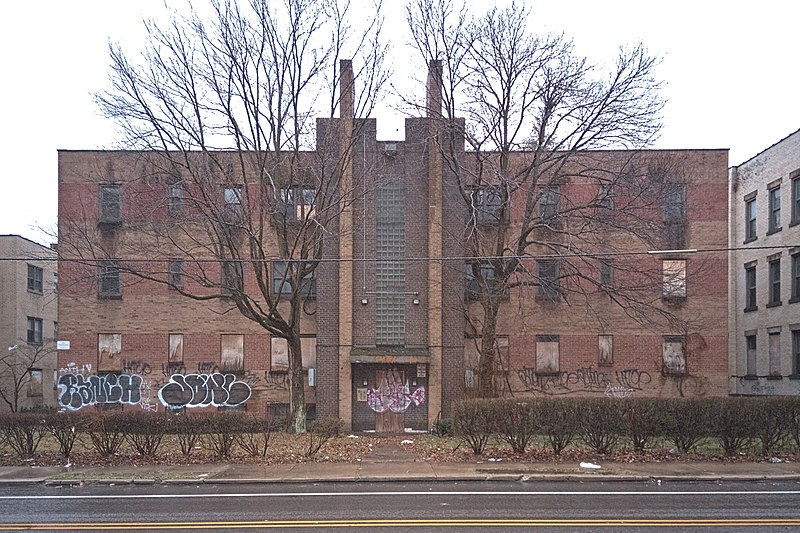
The Highland Building looms behind the tiny shops of Ellsworth Avenue.

This classical building was designed (in 1896) by architect William Ross Proctor to preside over this corner as if it owned both streets. By placing the entrance at the corner, Mr. Proctor refuses to decide whether the building is on Centre or Highland. “Both,” says that entrance.
Look up as you pass to appreciate the elaborate detail of the cornice.
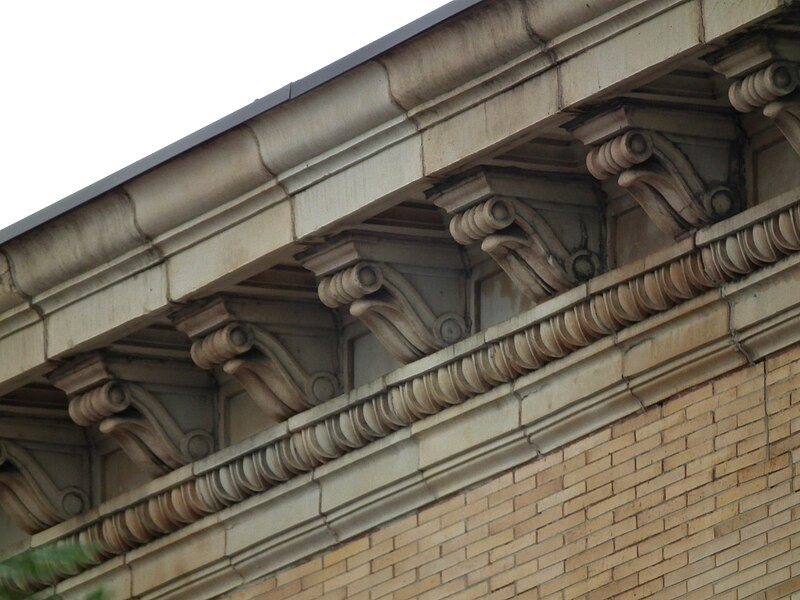

This glorious Renaissance palace was built in 1910; the architect was Thomas Hannah, who also gave us the Keenan Building. It is now a hotel.



Addendum: Here is a picture of the building when it was freshly built, from the June 1914 issue of The Builder, which is devoted to works of Thomas Hannah. The long side faced open space in those days.


Better known to Pittsburghers as Motor Square Garden: it opened as a market house in 1900, but failed a few years later and began a long association with the automobile business. The architects were Peabody and Stearns, who also designed Horne’s department store downtown and several prominent mansions in the East End neighborhoods.
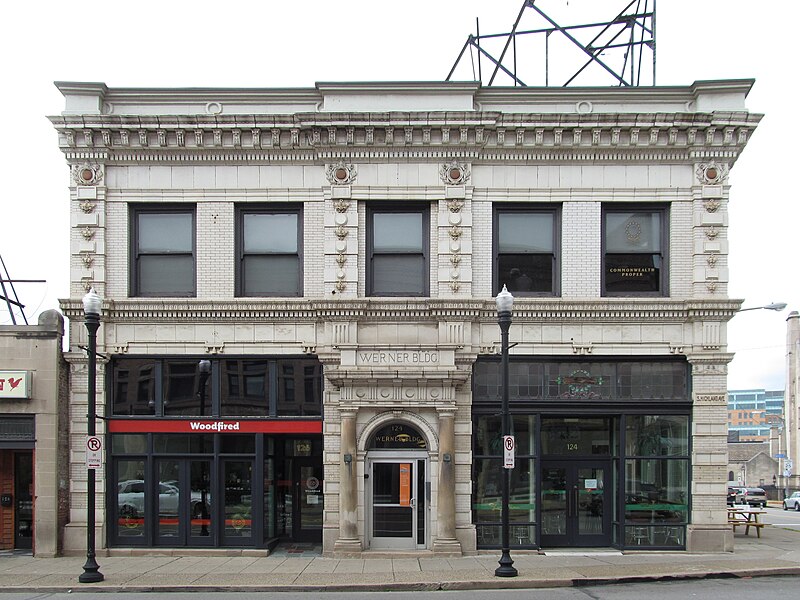

This beautiful building has a long and varied history. It seems to have been built a little before 1910 by a dry-cleaning company. After a while the East Liberty Chamber of Commerce moved in to preside over the slow decline of East Liberty. In 2001, when the East Liberty revival was barely beginning, the Werner Building became a performance-art space. Now, with East Liberty booming, it’s a profitable property.

The metalwork on top supported a billboard where artists spelled out messages, but in 2018 one artist posted a message so offensive that the building’s owner had it removed and shut down the billboard scheme. What was this offensive message? “THERE ARE BLACK PEOPLE IN THE FUTURE.” That was all. Father Pitt can only say that, if you are offended by the idea that there are Black people in the future, then you can go off and get yourself your own future, because old Pa Pitt does not want to be part of it.


The whole building is lavishly festooned with terra cotta and stained glass.
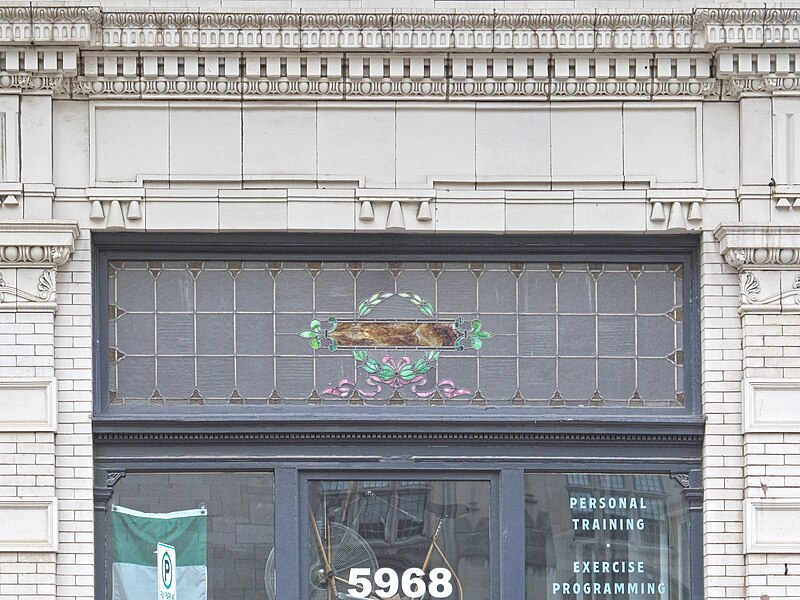


A matched set of probably doomed apartment buildings at the intersection of Negley Avenue and Rural Street, seen on an appropriately gloomy day. They were built between 1910 and 1923, and although they are mostly utilitarian boxes of apartments, their fronts are distinctive and interesting.

The treatment of the balconies creates a pleasingly complex rhythm, with broad and shallow rounded arches at the top, and slightly peaked Jacobean arches on the two lower floors. The windows in the center may have been stained glass, long since replaced when they were sold either by thieves or by an owner who could not afford to maintain them. The brick quoins add pleasing complexity to the texture.

Some kind of cornice or decorative strip has done missing from the fronts, revealing cheaper red brick behind it that was never meant to be seen.

Henry Hornbostel designed two prominent synagogues in Pittsburgh. The still-prospering Rodef Shalom is familiar to everyone, partly because it sits at the eastern end of the Fifth Avenue monument row in Oakland and Shadyside. This one, built in 1923, is perhaps a more adventurous design. Hornbostel used old and new materials and design elements from different traditions to create a building that immediately looked as if it had been there for a millennium or more. After a few years as a school, it is now in the midst of being repurposed as apartments.
Technically, according to the neighborhood border that goes up the middle of Negley Avenue on the city planning map, this building is in Garfield. Socially, it is more associated with East Liberty.


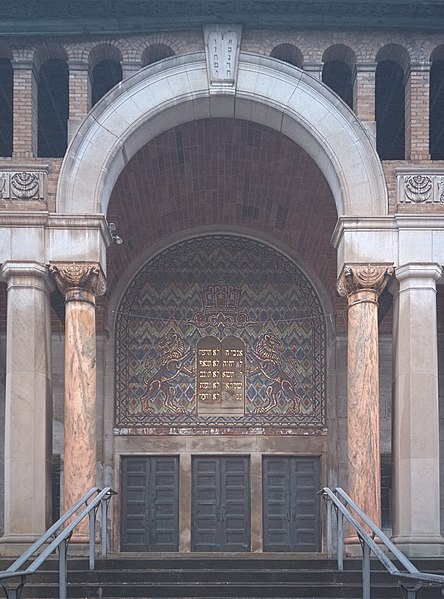



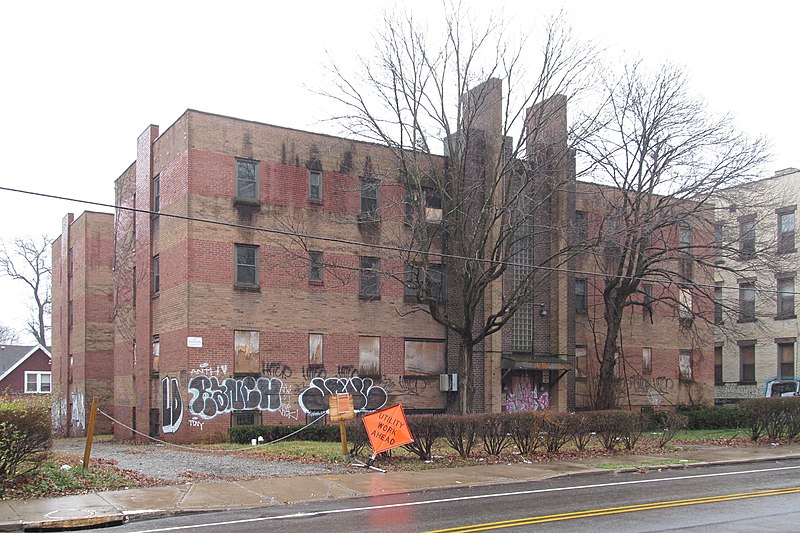
Art Deco is not very common in Pittsburgh, although there were a few Art Deco apartment buildings in the East End. Here is one on Negley Avenue that probably will not be with us much longer; it looks as though it is scheduled to be replaced. It is a late Art Deco style; old Pa Pitt would guess it dates from the 1950s. Most of the building is just a modernist block, but the horizontal stripes give it more than average decorative flair, and the vertical forms of the entrance lift it into the realm of Art Deco.
